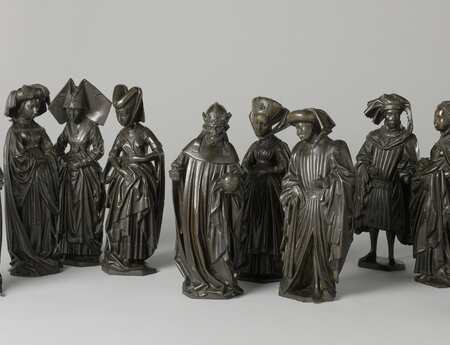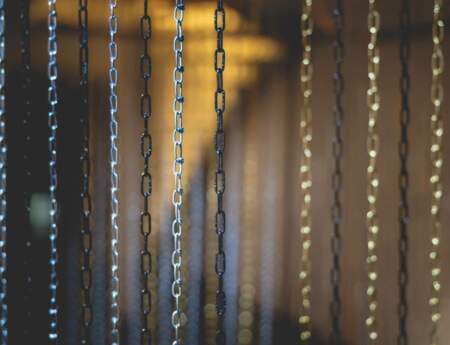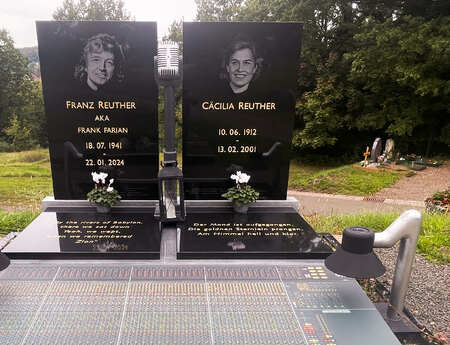The Sacro Bosco Sculpture Park in Bomarzo. Or: What is it that unites Sleeping Beauty and Dalí?
Feelings may be evoked by sculptural art but also by nature. And when the two are combined in a sculpture park, you are sometimes completely drawn into an artificially created spatial situation that feels all the more real. This may turn out to be quite magical. One such example is presented briefly here.
Near the small Italian town of Bomarzo in the province of Viterbo in Lazio is the home of a very special sculpture park created between 1552 and 1585: the Sacro Bosco (“Sacred Forest”), also known as the Parco dei Mostri (“Park of the Beasts”).
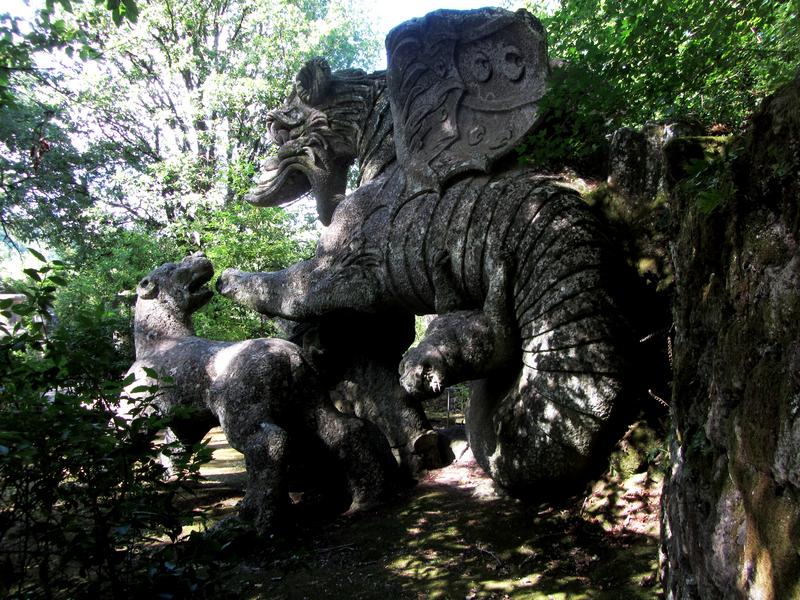
On the Site
The Sacro Bosco is actually a mixture of both terms. It is a park-like and very well-kept place with many trees and the meandering stream Fosso della Concia – a small forest made up of trees and stone that transports anyone who walks through it into a whole world of its own. Hidden around every corner are grotesque, weathered, sometimes monumental Mannerist stone sculptures and architectural ruins reminiscent of Antiquity, which may appear both sacred as well as occult-magical – depending on how the light happens to fall and on the mood the park's visitors are in. There is a lot to see: giants, beasts, snakes, elephants and figures taken from ancient Greek mythology, to name but a very few motifs. And there is also a crooked house, the Casa Pendente, to discover, which one can climb into and reflect on one's own perspective.
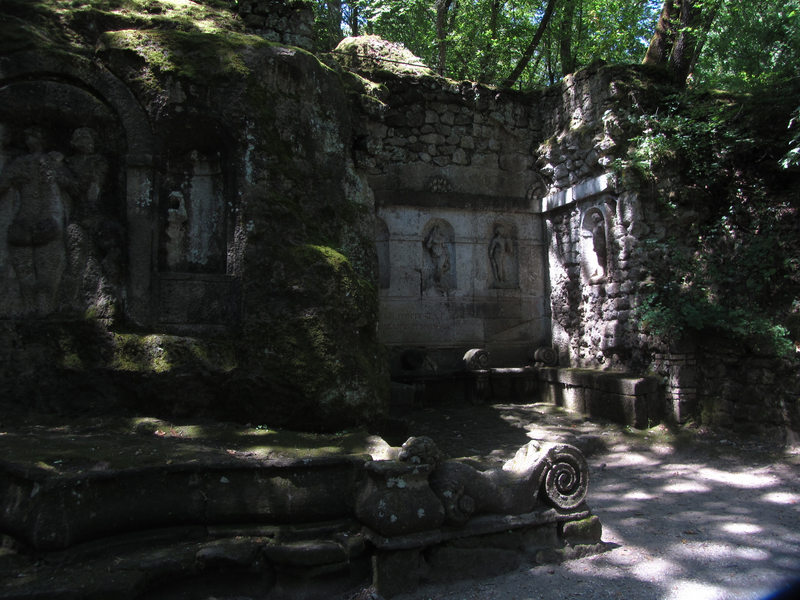
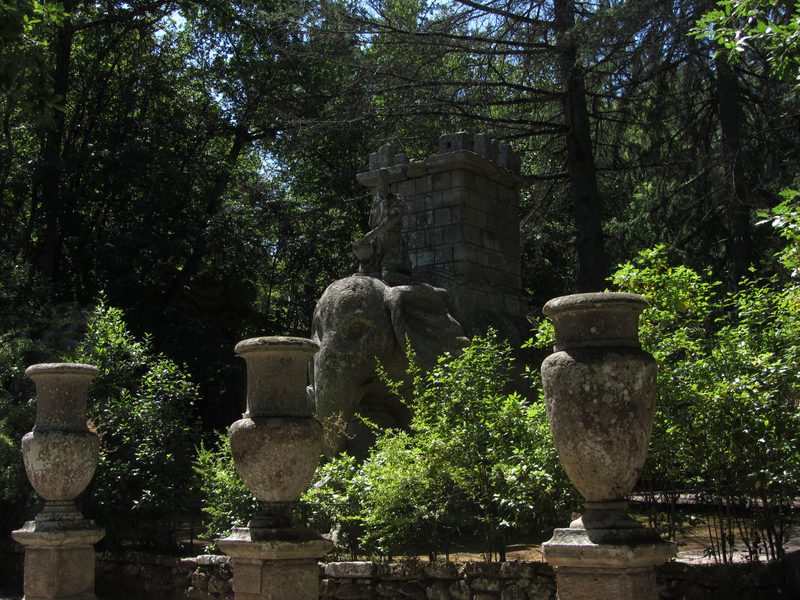
The Sculptures
The Sacro Bosco is home to over 30 sculptures, some of them monumental, made from the local basaltic tuff Peperino (also known as peperin, peperite or pepper stone), whose characteristic greenish-grey colouring blends in particularly well with the atmosphere of the park. Amongst the trees, bushes and overgrown slopes, they often don't catch the eye at first glance despite their impressive size but instead surprise visitors as they approach. Sphinxes, pegasi, giants, dragons and other monsters and mythical creatures mingle naturally with their partly structured and partly wild and pristine surroundings of plants, water and architectural ruins. Orcus tears open his huge mouth to reveal a small walk-in cave inside his head, in which a table is placed. Carved on the “gate frame” is the saying Ogni pensiero vola (“Every thought flies”), which is hardly in keeping with the motif itself. Such sometimes confusing and sometimes easily digestible associations are frequently encountered here – they are part of the fascination.
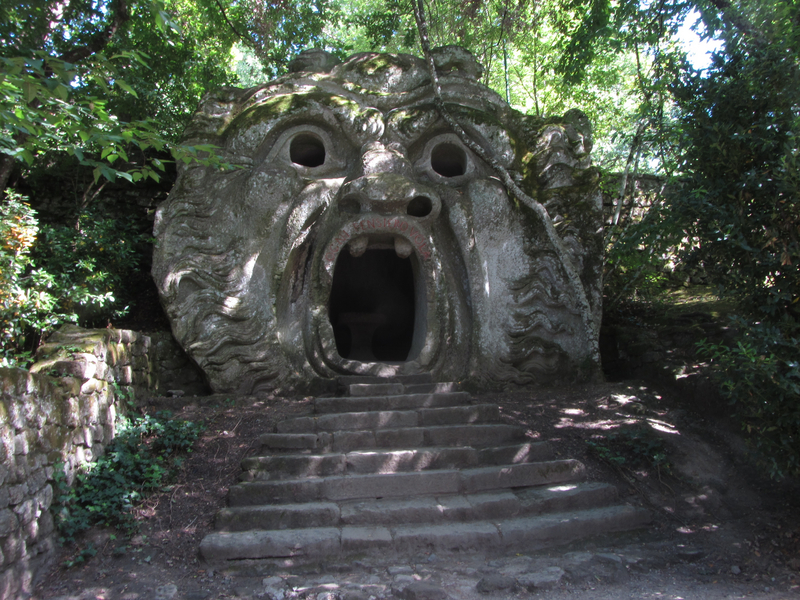
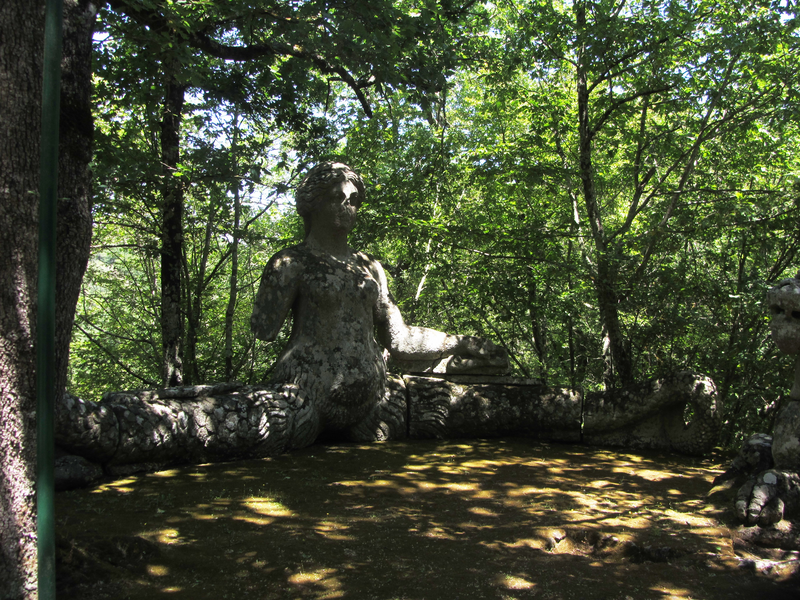
On one of several, sometimes more, sometimes less hidden inscriptions in the sculpture park it reads: Voi che pel mondo gite errando vaghi di veder meraviglie alte et stupende (“You who roam the world, eager to see high and amazing wonders”). Which is exactly what visitors to the Sacro Bosco still experience today.
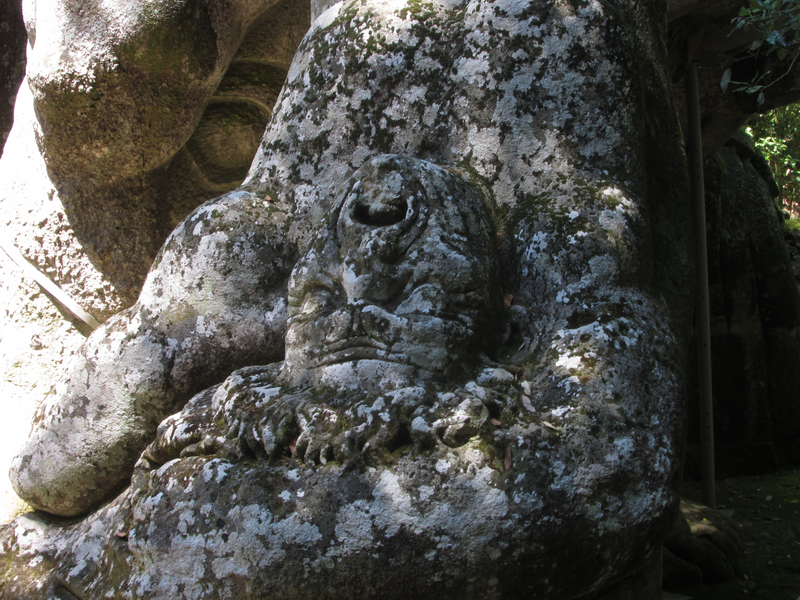
The names of the sculptors have unfortunately not been handed down with certainty. Due to the severe weather damage, it is also not possible to make a plausible stylistic classification. But even if it remains unknown whose chisel created these parks' sculptures, this does not detract from the imposing overall impression the park conveys. It may even be favourable to this effect, as it is not the creative personalities who take centre stage here, but the very personal impressions of the visitors.
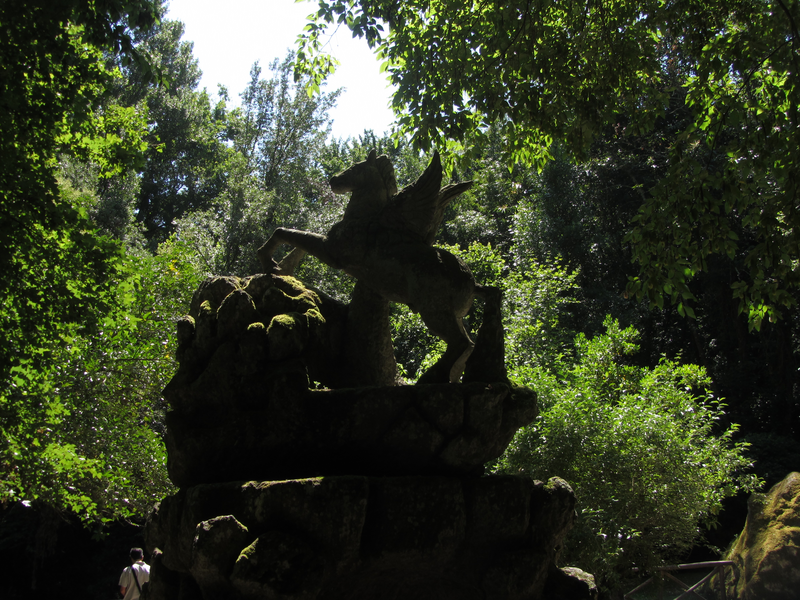
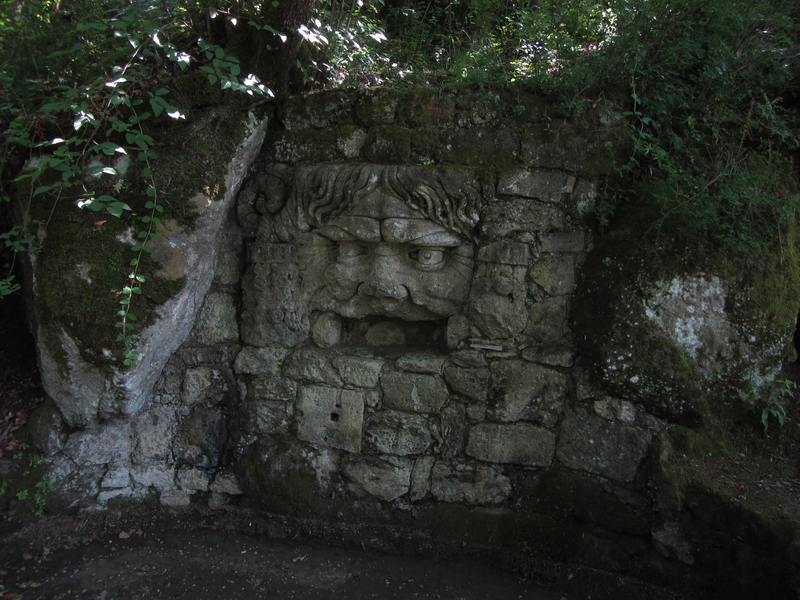
All out of Love …
This marvellous place was commissioned by the nobleman Vicino Orsini (actually Pier Francesco Orsini, 1523-85). It took more than thirty years to finalise this sculpture park project, which was presumably largely the product of the client's imagination – although it is often assumed that various well-known architects of the time were involved, including none other than Michelangelo Buonarroti.
Vicino Orsini devoted this magical place to his wife, Giulia Farnese, daughter of Galeazzo Farnese (Duke of Latera), who died during the construction of the sculpture park in 1564 and to whom he had been married for twenty years until her death, thus adding a highly personal element and no doubt also instilling some emotion. As to whether it is a romantic idea to dedicate a park to your wife that contains gruesome depictions of battles, such as between giants and other beasts attacking each other, is something that everyone has to decide for themselves.
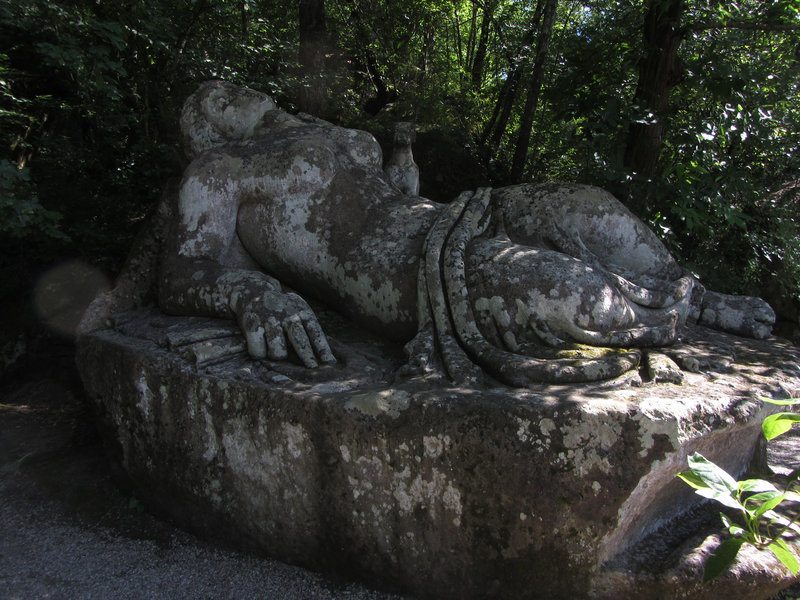
Almost 400 Years of Slumber
In 1585, Vicinio Orsini eventually passed away, and, hard to imagine, the park was forgotten and fell into a Sleeping Beauty slumber that lasted for several centuries. This is so fabulous that it just sounds like a PR story. But that is how it really was. It was not until the 20th century that the park was rediscovered, bought privately by a couple, thoroughly renovated and made accessible again without danger to life and limb.
By the way, the first prominent visitor was Salvador Dalí, which is not particularly surprising given the often nightmarish landscapes and scenes in his paintings. Some even assume that his impressions of the Sacro Bosco were incorporated into his painting The Temptation of St Anthony.
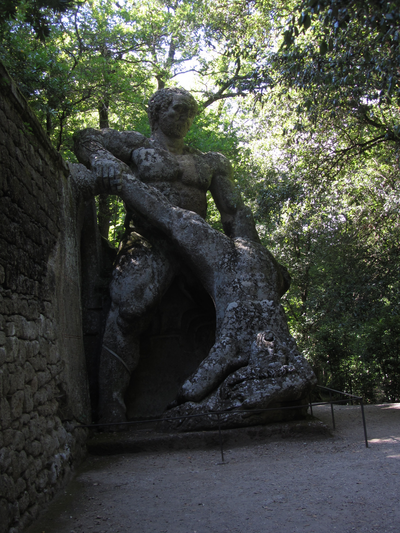
Why not just go there!
There is much more to describe and to tell, but the very special atmosphere of the Sacro Bosco and the feelings it is able to evoke must be experienced at first hand. So if you are travelling in Lazio next time or if you are still on the lookout for a destination for a wonderful holiday in Italy, this place is a definite must-see.
Written by Iris Haist in German.



